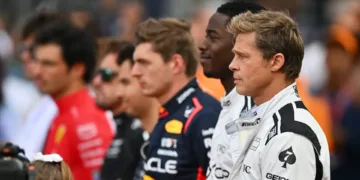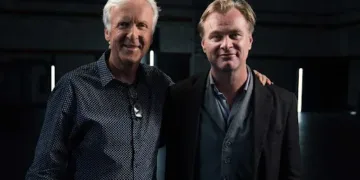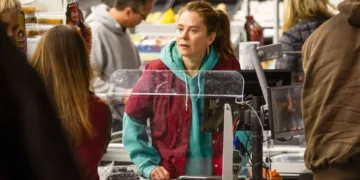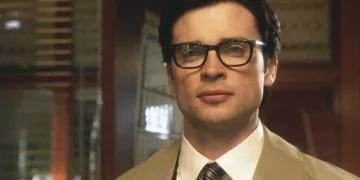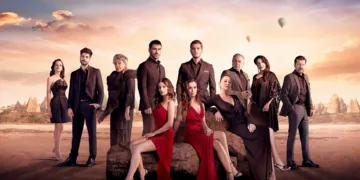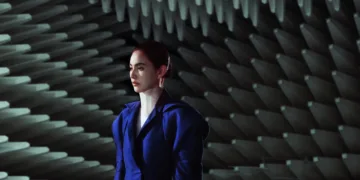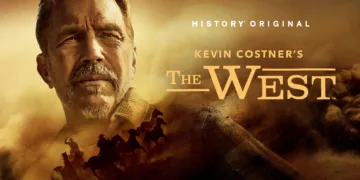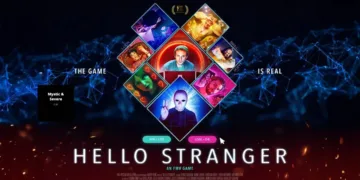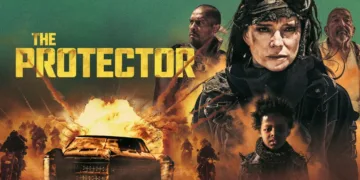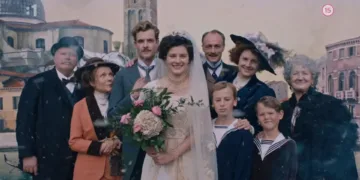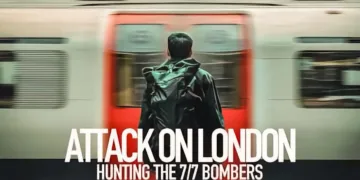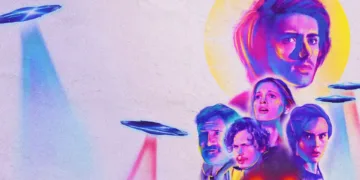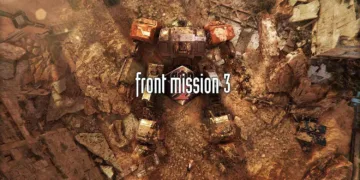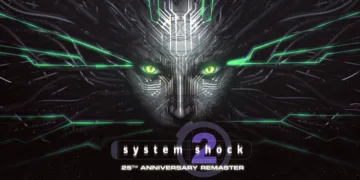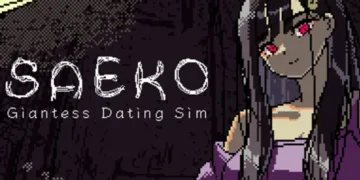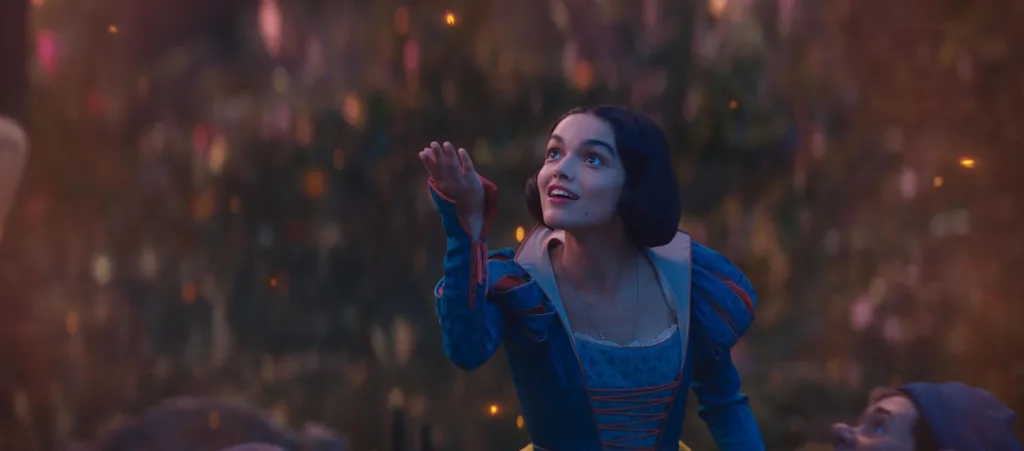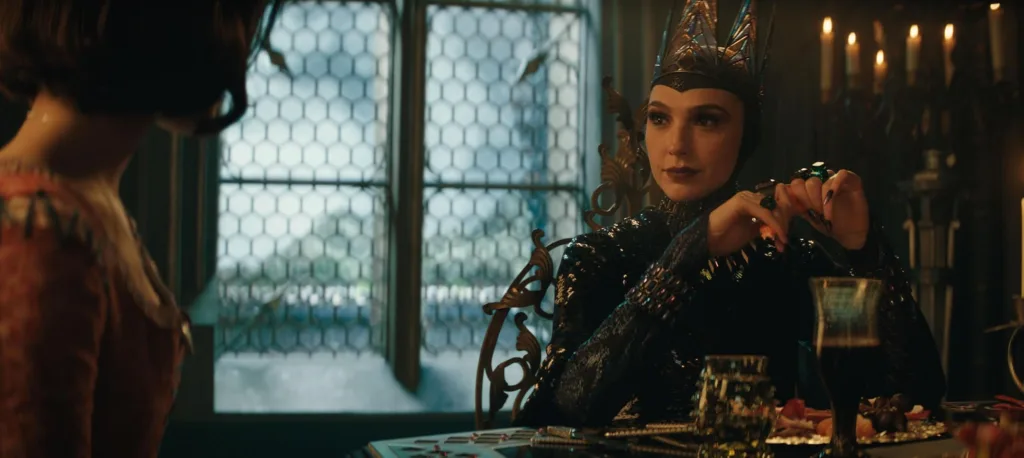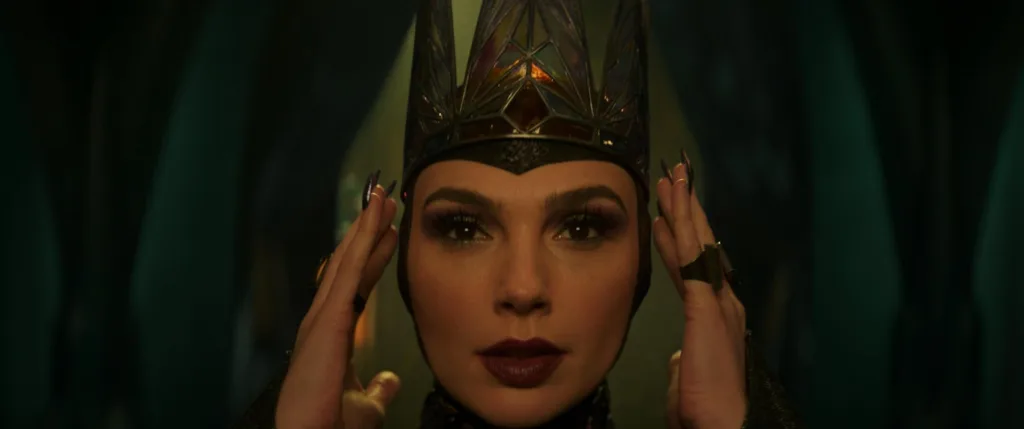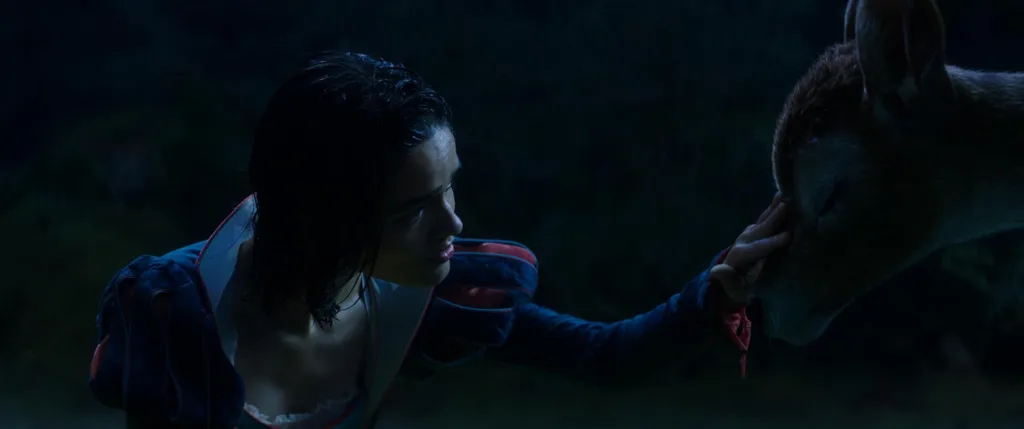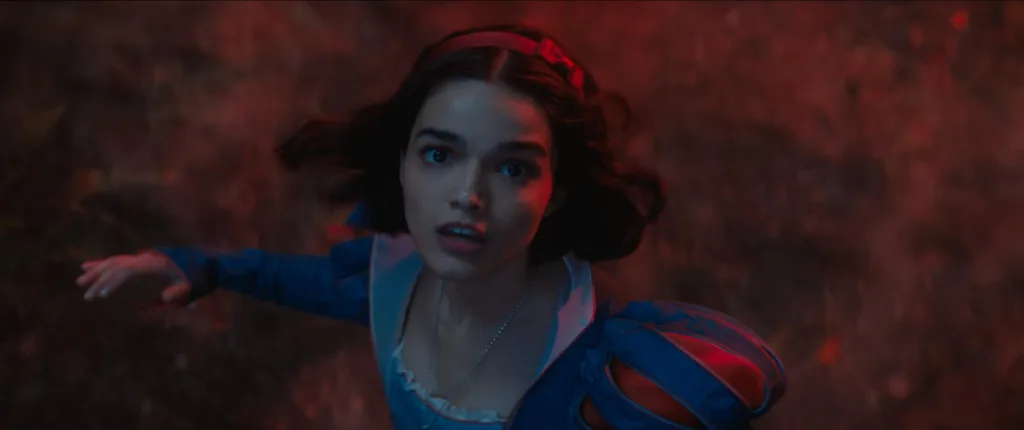‘Snow White’ emerges as a live-action reworking of a storied fairytale, aiming to pay homage to a cherished legacy while injecting fresh elements into the narrative. From its opening moments, one senses the filmmakers grappling with the weight of history (a nod to the 1937 animated original that remains a milestone in Disney lore) alongside a determination to refresh the tale for modern audiences.
The work of director Marc Webb—whose filmography includes titles such as The Amazing Spider-Man and 500 Days of Summer—stands at the heart of this endeavor, presenting a challenge: how does one reconcile the magical simplicity of an old favorite with contemporary storytelling that speaks to today’s social climate?
The production oscillates between a fond remembrance of a bygone era and a reinvention that echoes modern values. Its approach to familiar characters and settings is both reverent and daringly unconventional, inviting viewers to question traditional roles and assumptions.
The film’s dual character as a nostalgic tribute and a modern revision highlights its commitment to artistic reinvention, even when that balance occasionally results in unexpected shifts (which, admittedly, bring a wry smile to those willing to accept its contradictions).
Rewriting the Narrative: Snow White’s Rebirth
The film retells a familiar tale with an unexpected twist right from its title character’s origin. Here, Snow White is named after a fierce blizzard rather than her complexion—a clever rebranding that marks her transformation from a traditionally demure figure into one who takes charge of her destiny.
The narrative follows her escape from an oppressive regime headed by a scheming matriarch (a figure whose ambitions mirror historical power struggles in monarchies past) and her subsequent evolution in an enchanted yet unforgiving wilderness.
The opening sequence sets a picturesque stage, reminiscent of storybook illustrations, and quickly shifts gears. A serene kingdom gradually gives way to moments of tension as betrayal unfurls—a calculated treachery by the sinister ruler, followed by Snow White’s precipitous flight into an unpredictable forest. This pivot, almost surgical in its abruptness, captures a paradox of beauty and danger that has always defined fairy tales at their best.
The script intermingles cherished elements—such as the well-known melodies and archetypal characters—with inventive narrative turns. One particularly striking choice is the replacement of the classic princely figure with a roguish bandit, whose morally ambiguous charm hints at modern societal shifts regarding heroism.
Alongside the main plot, the film sprinkles subplots that evoke current political and social debates, subtly questioning authority and the nature of rebellion (a nod to historical revolutions and the modern quest for justice).
The pacing remains a study in contrasts: lyrical musical interludes are juxtaposed with brisk, tension-filled scenes, allowing character evolution to unfold in unexpected bursts. Occasionally, a moment of dry wit punctuates the unfolding drama—a reminder that even in a tale of ancient magic, humanity’s quirks remain timeless.
Faces of Rebellion: New Archetypes in Snow White
Rachel Zegler brings a distinct shift to the titular character, recasting her from a quiet bystander to a spirited force in a troubled realm. Her Snow White emerges from the ashes of personal loss and domestic subjugation, a figure who challenges the old order with a clear-eyed determination.
Her performance feels like an act of self-invention—a character who learns the hard lessons of grief and servitude, then refuses to remain defined by them (one might call it a self-made revolution in character design).
Gal Gadot commands the screen with a villain whose every gesture carries weight. The Evil Queen in this narrative is a study in contradiction: she wields menace with a flair that borders on theatrical, her costume and posture speaking of a heritage steeped in regal cruelty and modern eccentricity. Gadot’s interpretation manages to blend sternness with moments of dark humor, rendering a figure who is at once fearsome and absurdly captivating.
Jonathan, cast as the unconventional hero, replaces the age-old princely archetype. His brand of roguish charm nudges Snow White toward a new understanding of power and loyalty. Their on-screen interaction flickers with a spark that is both refreshing and unpredictably clashing—a reminder that old tales can be remixed in surprising ways.
Meanwhile, the film’s ensemble of digitally rendered companions and live-action rebels injects a layer of irony into the narrative. These characters, drawn from familiar motifs yet reinterpreted for a modern gaze, lend both levity and unexpected depth to the unfolding drama. Small moments of raw vulnerability, comic relief, and defiant stand-offs mark the relationships among these figures, each scene a microcosm of shifting roles and blurred lines between hero and misfit.
Harmonic Resonance: Reconfiguring Classic Tunes
The soundtrack marries familiar, cherished melodies—think “Heigh-Ho” and “Whistle While You Work”—with fresh, original numbers crafted by Pasek and Paul. The absence of “Someday My Prince Will Come” serves as a bold statement: Snow White refuses to be tethered to an antiquated romance narrative (a clear pivot that mirrors modern views on self-reliance).
Musically, traditional tunes receive a makeover that transforms them into lively, brassy showpieces. One might observe a Broadway-inspired flair in the new arrangements, a nod to theatrical roots that contrasts sharply with the timeless, almost ethereal quality of the original compositions. This juxtaposition sparks a conversation about the role of musical heritage in redefining cinematic storytelling.
There are moments when the music seems to punctuate character transformations—a particular sequence sees the score swell as Snow White asserts her newfound agency, marking a subtle shift in both tone and narrative pace. In one scene, a buoyant ensemble number underscores the protagonist’s quiet defiance against an oppressive order (a clever musical metaphor for modern upheavals in traditional power structures).
The vocal efforts deserve mention, too. Rachel Zegler’s clear, expressive tone lends a refreshing clarity to the reimagined ballads, while Gal Gadot’s imposing delivery in key villainous numbers injects a peculiar mix of gravitas and theatrical whimsy.
A few duets and group pieces offer unexpected, delightful contrasts that capture the film’s spirit of reinterpreting the old in a new light, occasionally flirting with contradictions that keep the listener both entertained and contemplative.
Visual Alchemy: Merging Real and Fantastical Worlds
The film’s visual presentation marries tangible locations with fantastical digital realms, creating a dynamic interplay between solid reality and surreal invention. The palace exudes an air of regality with its soft, opulent hues, a stark contrast to the cool, shadowed corridors that whisper of concealed perils. In the enchanted forest, an explosion of colors—lush greens intermingled with earthy tones—mixes with digital flourishes that render nature almost hallucinatory (a visual nod to historical shifts in artistic expression).
The computer-generated elements, particularly the portrayal of the dwarfs and other magical beings, strike a curious balance. Their digital forms evoke both charm and an odd disquiet, reminding viewers of the delicate interplay between fantasy and hyper-reality. Traditional puppetry and performance-capture techniques find a modern counterpart in the film’s CGI, yielding results that sometimes elicit genuine awe and other times provoke a wry, knowing smile (a pixelated paradox, if you will).
Sandy Powell’s costume work serves as a striking visual signature, echoing classic fairytale refinement while incorporating contemporary silhouettes and textures. Key sets—ranging from lavish palace interiors brimming with intricate detail to woodland spaces that, despite hints of artificiality, succeed in crafting immersive, otherworldly environments—demonstrate a meticulous attention to visual detail.
Certain sequences emerge as true visual tour de forces, their cinematography capturing moments that feel both timeless and strikingly current. At moments, the film’s visual strategy offers a commentary on the shifting nature of tradition versus modernity, prompting audiences to question not only the images before them but also the underlying narratives of art and power.
Empowerment & Symbolism: Recasting Myths in a Modern Light
The film transforms Snow White into a figure who refuses to remain idle in the face of oppression. Rachel Zegler’s interpretation positions her as a self-made icon—a character who carves her own destiny instead of succumbing to the passivity of classic narratives.
The removal of the traditional rescuer (a romantic savior archetype rendered obsolete) makes way for a narrative that speaks to contemporary demands for agency and self-determination. This shift mirrors historical shifts in societal roles, where power has gradually shifted from the hands of a select few to a more democratized vision of leadership.
There is an unmistakable political flavor to the narrative. The portrayal of tyranny, expressed through the calculated cruelty of the ruling figures, strikes a chord with those who recall epochs of authoritarian rule and the perennial struggle against class disparity. In scenes where the enchanted mirror becomes an unyielding arbiter of vanity and fear, one finds a subtle nod to the cultural forces that have long manipulated public opinion (a reminder that even fairy tales can mirror the machinations of power).
The dialogue and updated character arcs speak to an audience seeking a reimagining of old traditions. Familiar motifs—the forest as a sanctuary, the interplay of light and shadow, the metaphorical weight of an all-seeing mirror—gain new significance under this modern lens. Each symbol acts as a prism, refracting the historical and the current into a spectrum of meaning that challenges the viewer to reconsider established narratives.
At times, the film’s thematic ambitions may appear to contradict its narrative simplicity. Yet these contradictions inject a necessary unpredictability, provoking thought about the evolving roles of heritage and progress in our cultural dialogue.
Legacy Reimagined: Final Reflections
Marc Webb’s reimagining of this cherished fairy tale arrives as a bold experiment in reinterpreting established lore. The narrative unfolds with moments of lyrical grace interspersed with abrupt shifts that betray its ambition to unite age-old magic with contemporary sensibilities. Zegler and Gadot deliver performances that are both assertive and, at times, unexpectedly offbeat; their portrayals hint at characters wrestling with personal constraints and shifting power dynamics (a cinematic allegory for societal upheavals).
The film’s musical interludes and visual sequences occasionally strike a harmonious note, while other moments reveal a clumsy attempt to fuse traditional motifs with modern spectacle. Certain scenes, bursting with raw visual flair, evoke memories of historical epics that recharged classic narratives for new audiences.
For devotees of the original and those encountering the tale afresh, the film stands as a curious study in the tension between heritage and reinvention. Its imagery and storytelling provoke thought on authority, identity, and resistance (a clear nod to historical revolutions and cultural shifts).
Some facets may stumble in execution, yet the film’s effort to question dated narratives shines as a sincere act of thoughtful revisionism. Its imprint on the fairy-tale remake genre could spark ongoing debates about recharging legendary stories for today’s viewers.
The Review
Snow White
A spirited reimagining that dares to mix familiar charm with modern rebellion. While it occasionally falters in pacing and visual execution, its bold reinterpretation of classic elements invites viewers to question tradition and celebrate a more empowered narrative. It’s a film that may not please every purist, yet its inventive approach and cultural commentary ensure it leaves a memorable mark.
PROS
- Bold reinterpretation of classic characters
- Engaging musical and visual moments
- Strong performances that challenge traditional archetypes
- Thought-provoking social and cultural commentary
CONS
- Occasional pacing and narrative inconsistencies
- Some CGI effects feel uneven
- A few tonal shifts may alienate purists
- Visual elements sometimes distract from the storytelling













